Understand the differences between titanium and stainless steel and choose the best material for CNC machining.
Machining is a process of shaping, cutting, drilling, or milling a material to create a desired product or component. Machining can be done on various Machining can be done on various types of materials, such as metals, plastics, ceramics, wood, and more. However, not all materials are suitable for every machining application. Some factors that affect the choice of material include the mechanical properties, the corrosion resistance, the cost, the availability, and the environmental impact of the material. The environmental impact of the material.
In this article, we will compare two common metals used for machining: titanium and stainless steel. We will discuss the advantages and disadvantages of each metal, and provide some guidelines on how to choose the right material for your machining project.
Titanium is a silver-gray metal that has a high strength-to-weight ratio, meaning that it is very strong but also very light. Titanium is also very resistant to corrosion, which means that that is a good material for your machining project. resistant to corrosion, which means that it does not rust or deteriorate when exposed to air, water, or chemicals. Titanium is widely used for aerospace, medical, and military applications, as well as in the manufacture of other materials. Titanium is widely used for aerospace, medical, and military applications, as well as for jewelry, sports equipment, and consumer products.
Stainless steel is a steel alloy that contains at least 10.5% chromium, which gives it a shiny appearance and a high resistance to corrosion. Stainless steel is one of the most widely used metals in the world, and it can be found in various industries, such as construction, automotive, food, medical, and more.
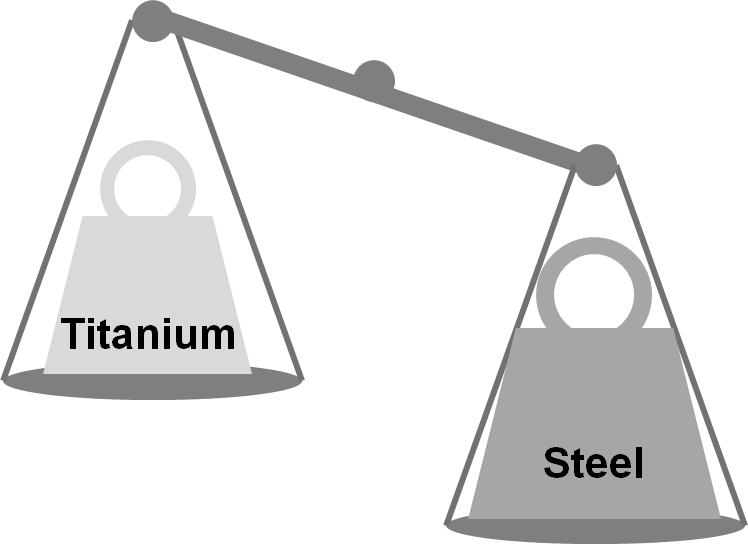
Titanium and stainless steel are two commonly used metal materials, and they have a wide range of applications in various fields, such as machining, medical devices, construction and decoration, aerospace, and more. The weight of titanium and stainless steel is an important factor in their performance and cost, so understanding and comparing their weights can help in choosing the right material.
The weight advantages of titanium and stainless steel are mainly in the following areas:
Titanium's weight advantage lies in its light weight and high strength, which makes it have a wide range of applications in areas that require high performance and low weight, such as aerospace, medical devices, and sporting goods. Titanium's light weight can reduce the cost and difficulty of transportation and installation, improve fuel efficiency and safety, reduce material consumption and waste, and reduce the burden on the environment. Titanium's high strength can improve product reliability and durability, increasing product life and cost effectiveness.
The weight advantage of stainless steel lies in its high corrosion resistance and high wear resistance, which makes it widely used in some fields requiring high durability and high aesthetics, such as architectural decoration, cooking utensils, consumer products and so on. The high corrosion resistance of stainless steel allows it to maintain its luster and integrity in a variety of harsh environments, preventing rust and corrosion, and prolonging the service life and aesthetics of the product. The high abrasion resistance of stainless steel allows it to maintain its hardness and stiffness under various friction and impact situations, preventing wear and deformation, and improving the stability and precision of products.
The weight disadvantages of titanium and stainless steel are mainly reflected in the following aspects:
The weight disadvantage of titanium lies in its high cost and low processability, which makes it have greater limitations in some fields that require low cost and high processability, such as machining, automobile manufacturing, etc.. The high cost of titanium mainly comes from its scarcity and refining difficulty, resulting in its price is much higher than other metals, increasing the manufacturing cost and market competitiveness of products. The low processability of titanium mainly comes from its high hardness and high activity, resulting in its cutting, welding, plating and other processing difficulties, requiring special equipment and technology, increasing the processing cost and time of the product.
The weight disadvantage of stainless steel lies in its high weight and low thermal conductivity, which makes it have greater limitations in some areas requiring low weight and high thermal conductivity, such as electronic equipment, heat exchangers and so on. The high weight of stainless steel mainly comes from its high density, resulting in its weight is much higher than other metals, increasing the weight and volume of the product, reducing the flexibility and portability of the product. The low thermal conductivity of stainless steel mainly comes from its high specific heat capacity, resulting in its thermal conductivity is much lower than that of other metals, which increases the thermal resistance and thermal stress of the product and reduces the thermal efficiency and stability of the product.
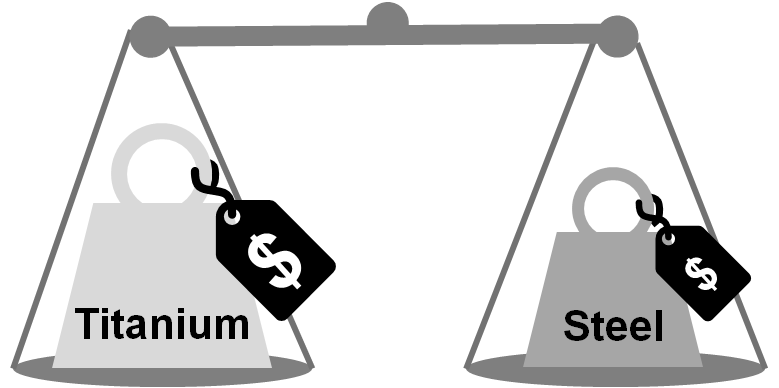
The price level of titanium and stainless steel is not a fixed value, but varies according to their composition and structure. Generally speaking, the price level of titanium is around $15 per kilogram and the price level of stainless steel is around $1.5-3 per kilogram. This means that titanium is 6-12 times more expensive than stainless steel for the same weight.
- Scarcity of Titanium: Titanium is a rare metal that is found in the earth's crust in only 0.63% of the earth's surface, and most of it exists in the form of complex minerals that are difficult to extract and separate. This leads to a very limited supply of titanium, which cannot meet the market demand, thus pushing up the price of titanium.
- Difficulty of refining titanium: The refining process of titanium is very complex and expensive, requiring several steps and processes, such as ore beneficiation, chlorination, reduction, refining and forging. This leads to a very high production cost of titanium, which is also reflected in the price of titanium.
- Applications of Titanium: Titanium has a wide range of applications in many industries such as aerospace, medical devices, construction and decoration, sporting goods, etc. Moreover, these industries have very high requirements on the performance and quality of titanium, requiring the use of high-end titanium alloys. This leads to a very high market demand for titanium, and also pushes up the price of titanium.
- The composition of stainless steel: stainless steel is a steel alloy, its main component is iron, and also contains a certain proportion of chromium, nickel, manganese, molybdenum and other elements. The content and proportion of these elements determine the performance and quality of stainless steel, and also affect the price of stainless steel. Generally speaking, stainless steel containing more chromium, nickel, molybdenum and other precious elements will have a higher price, such as 304, 316 and other grades of stainless steel.
- Structure of stainless steel: Stainless steel can be categorized into austenitic, ferritic, martensitic, duplex and other types according to its crystal structure. The performance and quality of these types of stainless steel also differ, which also affects the price of stainless steel. Generally speaking, austenitic stainless steel with better corrosion resistance and molding properties will have a higher price, such as 304, 316 and other grades of stainless steel.
- Market condition of stainless steel: The market condition of stainless steel will also affect the price of stainless steel, mainly including market demand, supply, competitiveness, policies and regulations, natural disasters and other factors. These factors will cause the price of stainless steel to fluctuate up and down with the changes in the market. Generally speaking, when the market demand is greater than the supply, the price of stainless steel will rise, and vice versa will fall.
There is a big difference between the price of titanium and stainless steel, and the price of titanium is about 6-10 times higher than that of stainless steel. This is mainly due to the scarcity of titanium, the difficulty of refining and the impact of application areas. The price of stainless steel is much lower than that of titanium, which is mainly due to the influence of the composition, structure and market conditions of stainless steel.
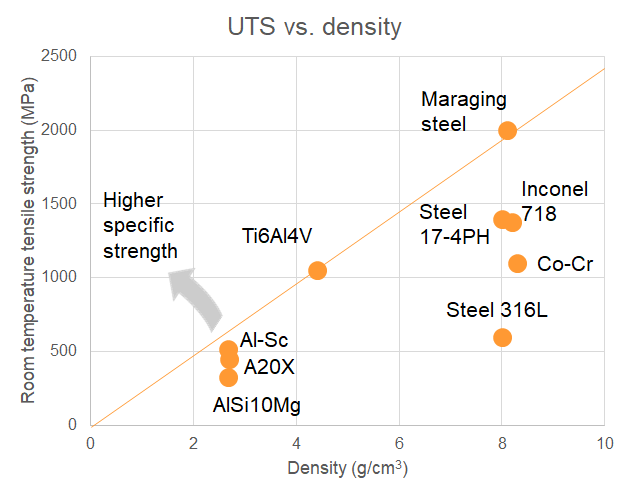
Density is the mass of a substance per unit volume, it is a physical quantity that measures the compactness of a substance, usually expressed by the symbol ρ, and the unit is kilogram per cubic meter (kg/m³). Different substances have different densities, and the higher the density, the more compact the substance is and the more it weighs.
- The densities of titanium and stainless steel are not a fixed value, but vary according to their composition and structure. In general, titanium has a density of around 4.51g/cm³ and stainless steel has a density of around 7.93g/cm³. This means that stainless steel weighs about 76% more than titanium for the same volume.
- The density of titanium and stainless steel also affects their other properties, such as strength, hardness, thermal and electrical conductivity. In general, titanium is stronger and harder than stainless steel, but titanium has lower thermal and electrical conductivity than stainless steel. These differences in properties make titanium and stainless steel have different advantages and disadvantages in different fields and applications.
- Titanium's low density, making it in some of the requirements of lightweight and high strength has a wide range of applications in the field, such as aerospace, medical equipment, sporting goods. Titanium's low density also makes it more resistant to corrosion and heat, and can maintain its performance and quality in a variety of harsh environments.
- The high density of stainless steel allows it to have a wide range of applications in areas that require high durability and aesthetics, such as architectural decoration, cookware, and consumer products. The high density of stainless steel also makes it more thermally and electrically conductive, allowing it to play a role in a variety of electronic devices and heat exchangers.
Titanium and stainless steel are both commonly used metal materials, but they differ in their corrosion resistance. Generally speaking, the corrosion resistance of titanium is superior to that of stainless steel, because titanium has high corrosion resistance in most media, especially in neutral, oxidizing media and seawater. Titanium does not undergo localized and intergranular corrosion, and corrosion occurs uniformly. Titanium has excellent corrosion resistance to most salt solutions, such as titanium in chloride solutions than high-chromium-nickel steel corrosion resistance, and no pore corrosion phenomenon. Titanium is highly stable to various concentrations of nitric and chromic acids, and has high corrosion resistance in alkaline solutions and most organic acids and inorganic salt solutions.
- The corrosion resistance of stainless steel depends mainly on the formation of a layer of aluminum oxide film on its surface, which prevents stainless steel from reacting with other substances in the environment. However, this film is not completely stable, it will be affected by a number of factors, such as temperature, pH, chloride ions, sulfate ions and so on. When these factors exceed a certain limit, the aluminum oxide film will be destroyed, resulting in accelerated corrosion of stainless steel. Stainless steel has poor corrosion resistance in acidic or alkaline media, and is prone to pitting, intergranular corrosion, stress corrosion and so on. The corrosion resistance of stainless steel is also affected by its alloy composition, generally speaking, stainless steel containing more chromium, nickel, molybdenum and other precious elements will have better corrosion resistance, such as 304, 316 and other grades of stainless steel.
Titanium and stainless steel corrosion resistance is significantly different, titanium corrosion resistance is superior, more suitable for use in harsh environments, such as marine, chemical, medical and other fields. Stainless steel has weaker anti-corrosion properties and is more suitable for use in mild environments, such as power, transportation, cookware and other fields.
There is no definitive answer to which material is better for machining, as it depends on the specific requirements and preferences of each project. However, some general factors that can help you decide are.
- The mechanical properties of the material, such as the strength, hardness, ductility, and toughness. You should choose a material that You should choose a material that can withstand the forces and stresses that your product or component will encounter.
- The corrosion resistance of the material, such as the ability to resist rust, oxidation, or chemical reactions. You should choose a material that can survive the environment and conditions. The corrosion resistance of the material, such as the ability to resist rust, oxidation, or chemical reactions.
- You should choose a material that can survive the environment and conditions that your product or component will face. The cost of the material, such as the price per unit, the availability, and the supply chain. You should choose a material that fits your budget and timeline, and that you can easily obtain and transport.
- The environmental impact of the material, such as the energy consumption, the waste generation, and the carbon footprint. choose a material that minimizes the negative effects on the planet and the society.
The titanium and stainless steel are both popular metals used for machining, but they have different advantages and disadvantages. Titanium is lighter, stronger, and more durable. is lighter, stronger, and more corrosion-resistant, but it is also more expensive, harder to machine, and more prone to galling. Stainless steel is heavier, more durable, and more aesthetic, but it is also less thermally conductive, more work hardening, and more magnetic. The choice of material depends on the specific needs and goals of the user. The choice of material depends on the specific needs and goals of each machining project.
Richconn is a rapid prototyping and precision machining company located in Shenzhen. We have many years of experience and advanced equipment to provide you with high-quality and efficient titanium and stainless steel CNC machining services.
Richconn's titanium and stainless steel CNC machining services cover three-axis, four-axis, five-axis, CNC machining turning and CNC machining milling combined and other processes, which can meet your various design and specification requirements. Our CNC machining services have high precision and stability, which can ensure the accuracy and consistency of the size and shape of your products. We also provide a variety of surface treatment and coating options, such as electroplating, polishing, spray painting, Anodizing, etc., can improve the corrosion resistance and aesthetics of your products. Provide you with fast quotation and delivery services, save your time and costs, and improve your market competitiveness.
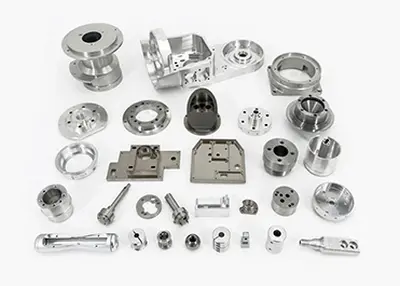 What Are the General Types of Measurement Methods for Machining Accuracy of Machine Parts?October 27, 2023Machining accuracy is the actual size, shape, position of the surface of the machined part three kinds of geometric parameters and drawings required by the ideal degree of compliance with the geometric parameters.view
What Are the General Types of Measurement Methods for Machining Accuracy of Machine Parts?October 27, 2023Machining accuracy is the actual size, shape, position of the surface of the machined part three kinds of geometric parameters and drawings required by the ideal degree of compliance with the geometric parameters.view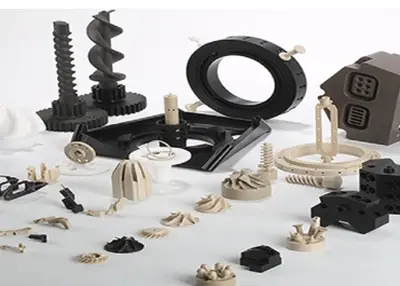 Cutting Costs, Not Quality: Exploring the Best Cheap CNC Material OptionsDecember 4, 2023In today's competitive market, every business is constantly finding ways to cut costs without compromising the quality of their products or services. When it comes to CNC machining, one of the mos...view
Cutting Costs, Not Quality: Exploring the Best Cheap CNC Material OptionsDecember 4, 2023In today's competitive market, every business is constantly finding ways to cut costs without compromising the quality of their products or services. When it comes to CNC machining, one of the mos...view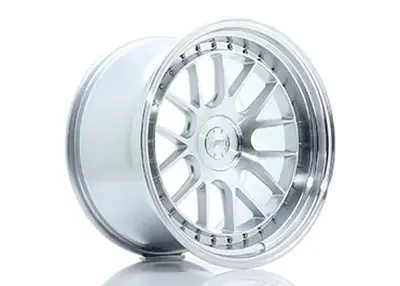 CNC Machining and Machined Wheels: Elevating Automotive ExcellenceNovember 7, 2023Are you ready to delve into the intricate world of CNC machining and its remarkable connection with machined wheels? As an automotive enthusiast and CNC machining professional, I'm thrilled to guide you through this comprehensive exploration of the dynamic interplay between precision engineering and high-performance wheels. Let's roll!view
CNC Machining and Machined Wheels: Elevating Automotive ExcellenceNovember 7, 2023Are you ready to delve into the intricate world of CNC machining and its remarkable connection with machined wheels? As an automotive enthusiast and CNC machining professional, I'm thrilled to guide you through this comprehensive exploration of the dynamic interplay between precision engineering and high-performance wheels. Let's roll!view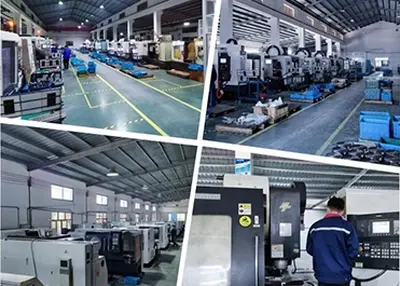 Which Is Easier to Weld, Aluminum or Stainless Steel?October 26, 2023This is because the melting point of stainless steel is higher than that of aluminum alloys, which makes it more stable during the welding process. Aluminum alloys are prone to the risk of being burned through because of their low melting point during the welding process. In addition, aluminum alloys are also susceptible to the formation of an aluminum oxide film on the surface in air, which has a much higher melting point than aluminum itself, making it more difficult to weld.view
Which Is Easier to Weld, Aluminum or Stainless Steel?October 26, 2023This is because the melting point of stainless steel is higher than that of aluminum alloys, which makes it more stable during the welding process. Aluminum alloys are prone to the risk of being burned through because of their low melting point during the welding process. In addition, aluminum alloys are also susceptible to the formation of an aluminum oxide film on the surface in air, which has a much higher melting point than aluminum itself, making it more difficult to weld.view A Basic Introduction to CNC LathesJune 11, 2024If you're eager to delve into the captivating realm of CNC lathes, this article is your gateway. Whether you're interested in their specific functionalities, wide-ranging applications, or significant roles in the manufacturing industry, this is the perfect read to quench your curiosity.view
A Basic Introduction to CNC LathesJune 11, 2024If you're eager to delve into the captivating realm of CNC lathes, this article is your gateway. Whether you're interested in their specific functionalities, wide-ranging applications, or significant roles in the manufacturing industry, this is the perfect read to quench your curiosity.view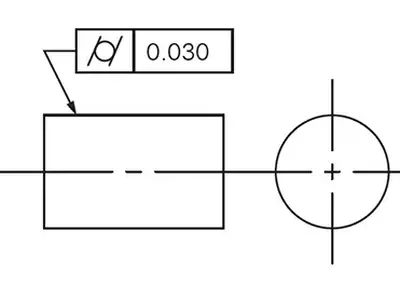 Unlocking Precision: Mastering Cylindricity for Engineering ExcellenceNovember 21, 2023In the intricate world of engineering, precision reigns supreme. Enter the realm of cylindricity - a fundamental attribute dictating the perfection of cylindrical forms. Here, I guide you through an explorative journey, unveiling the essence of cylindricity, its nuanced applications in GD&T (Geometric Dimensioning and Tolerancing), and the crucial methods to measure and comprehend this vital parameter.view
Unlocking Precision: Mastering Cylindricity for Engineering ExcellenceNovember 21, 2023In the intricate world of engineering, precision reigns supreme. Enter the realm of cylindricity - a fundamental attribute dictating the perfection of cylindrical forms. Here, I guide you through an explorative journey, unveiling the essence of cylindricity, its nuanced applications in GD&T (Geometric Dimensioning and Tolerancing), and the crucial methods to measure and comprehend this vital parameter.view